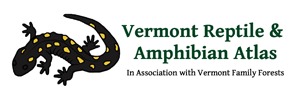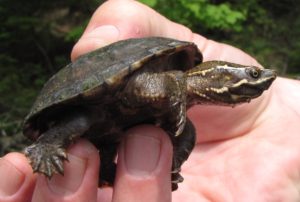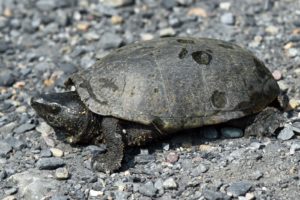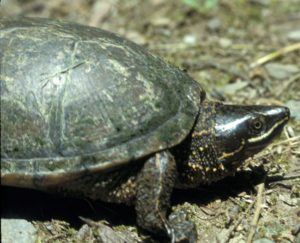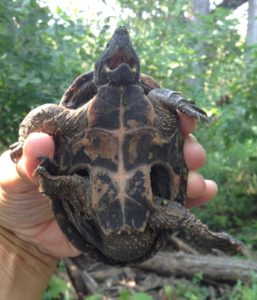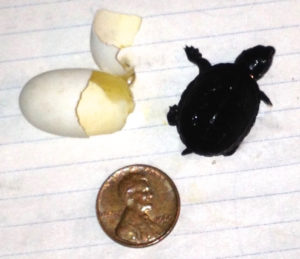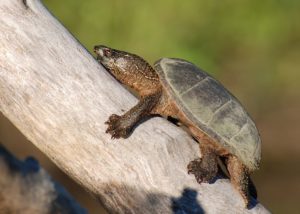Sternotherus odoratus
Identification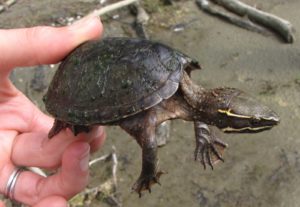
The carapace (shell covering the back) of the Eastern Musk Turtle is oval, moderately domed, smooth (no keel and smooth at back edge), and a solid grayish green. The plastron (shell covering the belly) is small and hinged, although the hinge does not work well. There is also skin exposed between the scutes on the plastron. The carapace length can be 3-5 inches. Their skin is grayish-green and they have two white stripes on each side of their head and neck. They have a few fleshy hair-like projections under their chin.
Get more detailed identification and life history information by downloading the chart here.
You can learn more about this species and see some video footage by checking out this short clip from our Rattlers, Peepers & Snappers DVD. Find answers to some frequently asked questions about turtle nesting, what to do if a turtle nests on your property, and how to protect turtle nests at this link.
Range/Habitat
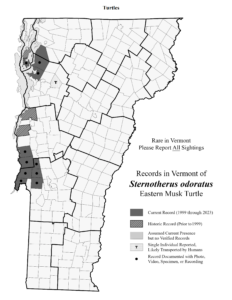
[ click image to zoom | download printable PDF ]

[ click image to zoom | download printable PDF ]
Eastern Musk Turtles are almost entirely aquatic, preferring shallow, weedy, still water. They lay their eggs very near the water’s edge. The Eastern Musk Turtle is limited to scattered locations in the Champlain Basin.
Status
This species has a state natural heritage rank of S2 (rare) and is a species of special concern in Vermont. The Eastern Musk Turtle has been designated a Species of Greatest Conservation Need (medium priority) in Vermont’s Wildlife Action Plan. Please report all sightings of this species in Vermont. Take photos if possible. Even historic sighting information is useful.
Additional Photos
More Info
The Eastern Musk Turtle is also called Musk Turtle, or Stinkpot.
- Sternotherus odoratus at Animal Diversity website
- Sternotherus odoratus at Canadian Herpetological Society website
- Sternotherus odoratus in the Vermont Agency of Natural Resources’ Wildlife Action Plan: Amphibian & Reptiles (9/25/2015 draft)
Species summary written by Ariel K. McK. Burgess.
